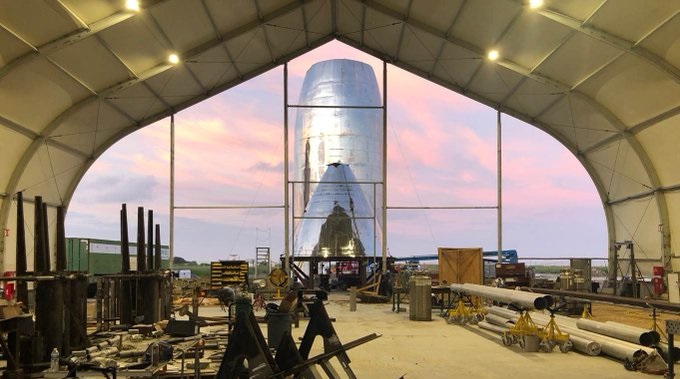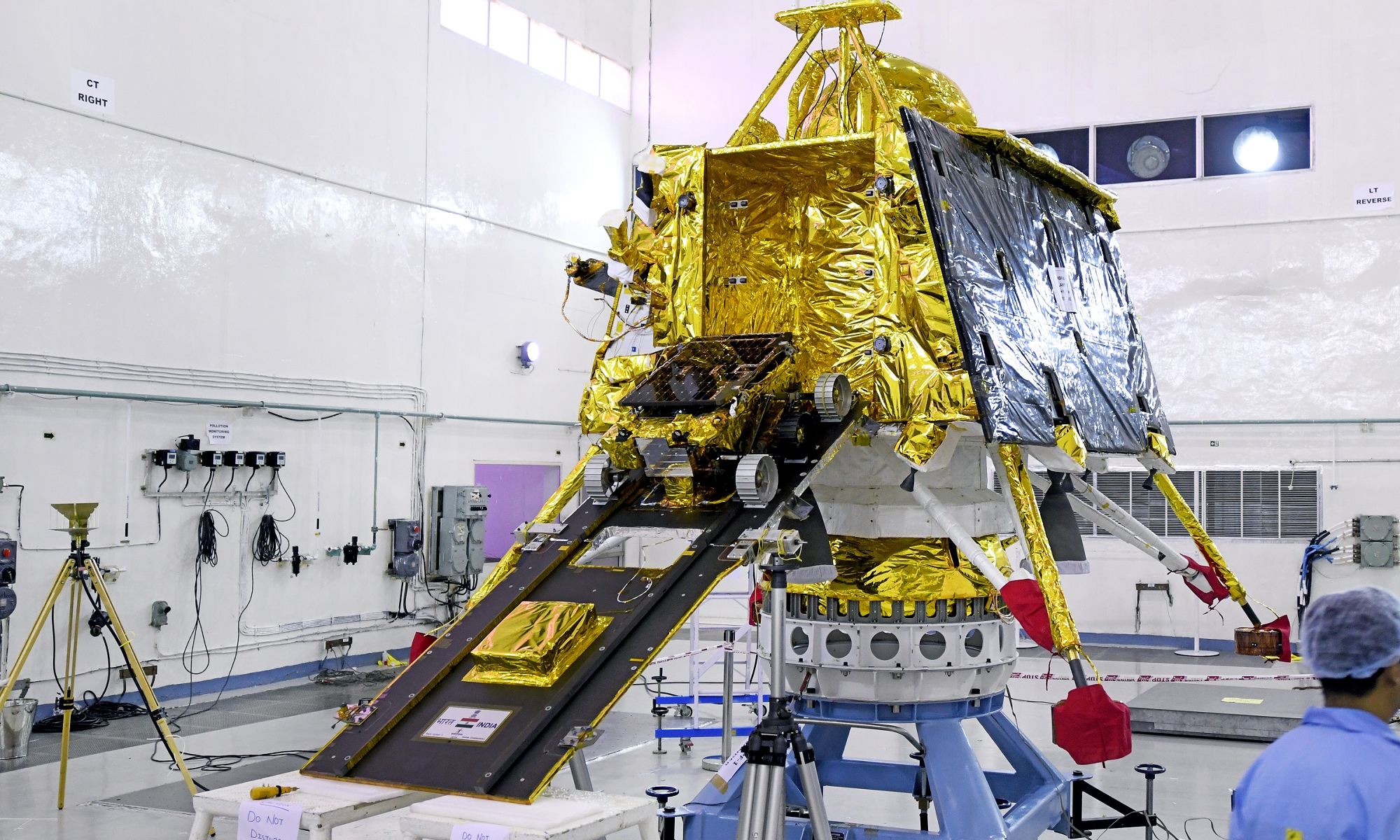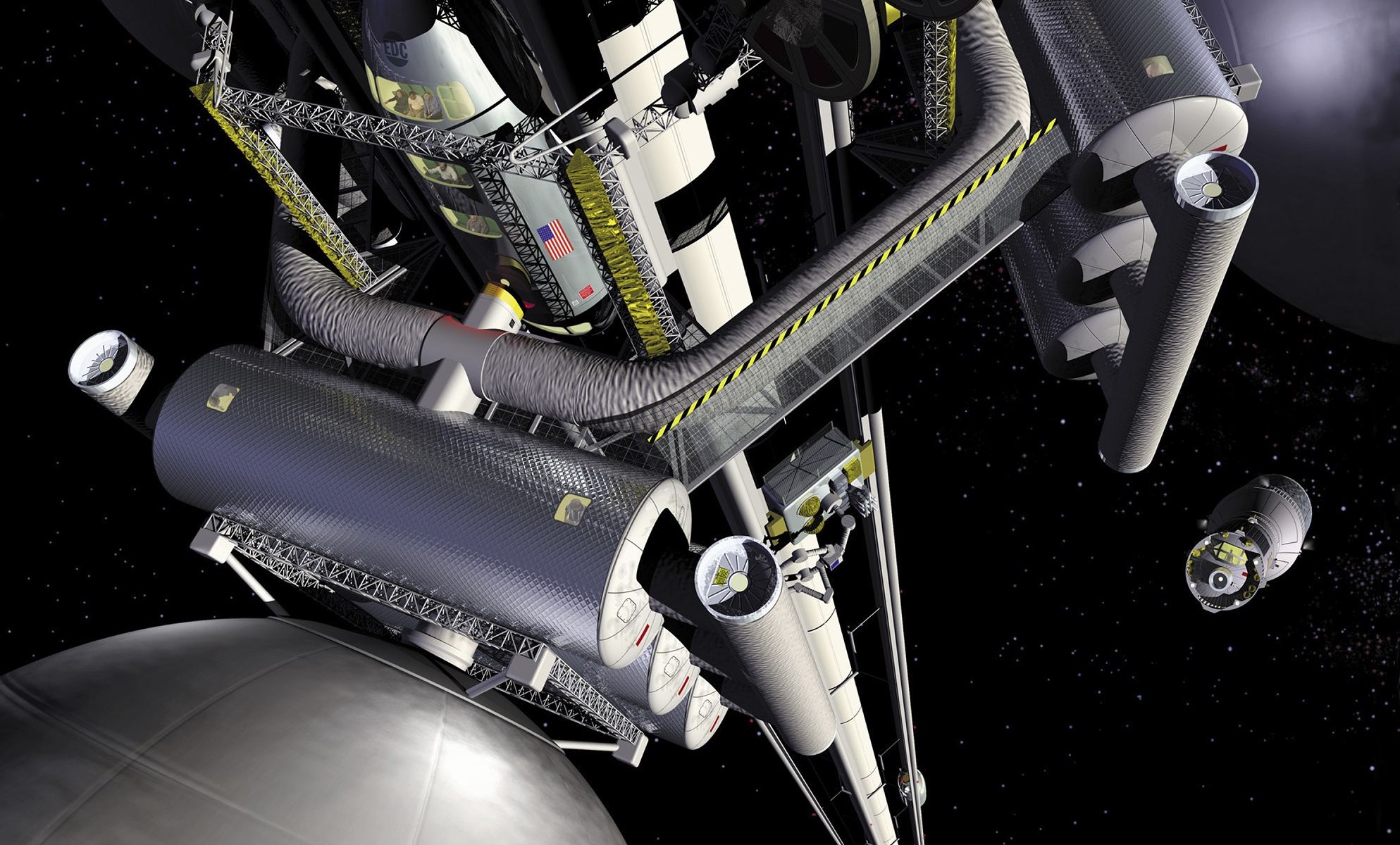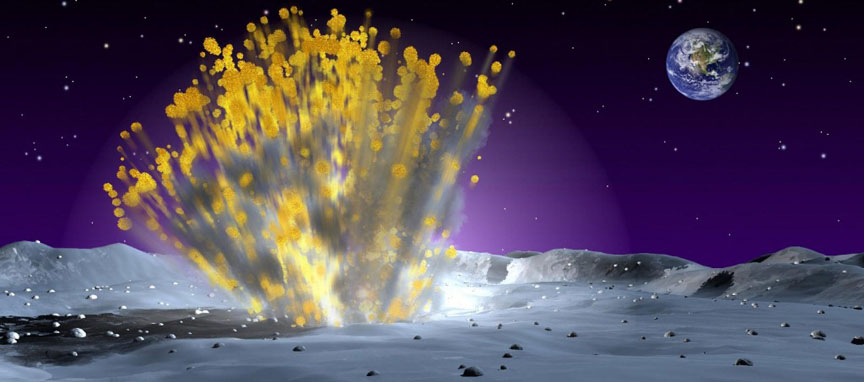China greeted the New Year with some impressive lunar milestones. For starters, last Friday (Jan. 3rd) was the first anniversary of the Chang’e-4 mission becoming the first robotic mission to make a landing on the far side of the Moon. A day prior, the Yutu-2 rover also celebrated the end of its 13th lunar day of science operations and the fact that it was the first rover to travel a record 357.695 meters (1,173.5 ft) on the far side of the Moon.
Continue reading “Chang’e-4 Wraps Up a Year Roving on the Far Side of the Moon”The Moon’s Magnetosphere Used to be Twice as Strong as the Earth’s
For decades, scientists have held that the Earth-Moon system formed as a result of a collision between Earth and a Mars-sized object roughly 4.5 billion years ago. Known as the Giant Impact Hypothesis, this theory explains why Earth and the Moon are similar in structure and composition. Interestingly enough, scientists have also determined that during its early history, the Moon had a magnetosphere – much like Earth does today.
However, a new study led by researchers at MIT (with support provided by NASA) indicates that at one time, the Moon’s magnetic field may have actually been stronger than Earth’s. They were also able to place tighter constraints on when this field petered out, claiming it would have happened about 1 billion years ago. These findings have helped resolve the mystery of what mechanism powered the Moon’s magnetic field over time.
Continue reading “The Moon’s Magnetosphere Used to be Twice as Strong as the Earth’s”SpaceX is Sure They’ll be Able to Land Starship on the Moon in 2022
Things are looking pretty good for Elon Musk and SpaceX, the company he founded back in 2002 with the intent of reinvigorating space exploration. In the last six months alone, SpaceX has deployed the first batch of its Starlink broadband internet satellites to space, conducted two successful untethered tests with the Starship Hopper, and finished work on the first orbital-class Starship test vehicle (the Mk.1).
And at the 70th International Astronautical Congress, which took place last week in Washington, DC, SpaceX president and Chief Operations Officer Gwynne Shotwell provided additional details about the Starship‘s mission timeline. As she indicated during a series of interviews, the company hopes to be sending the Starship to orbit next year, landing on the Moon by 2022, and sending payloads to the lunar surface by 2024.
Continue reading “SpaceX is Sure They’ll be Able to Land Starship on the Moon in 2022”Lockheed Wins the Contract to Build Six More Orion Capsules
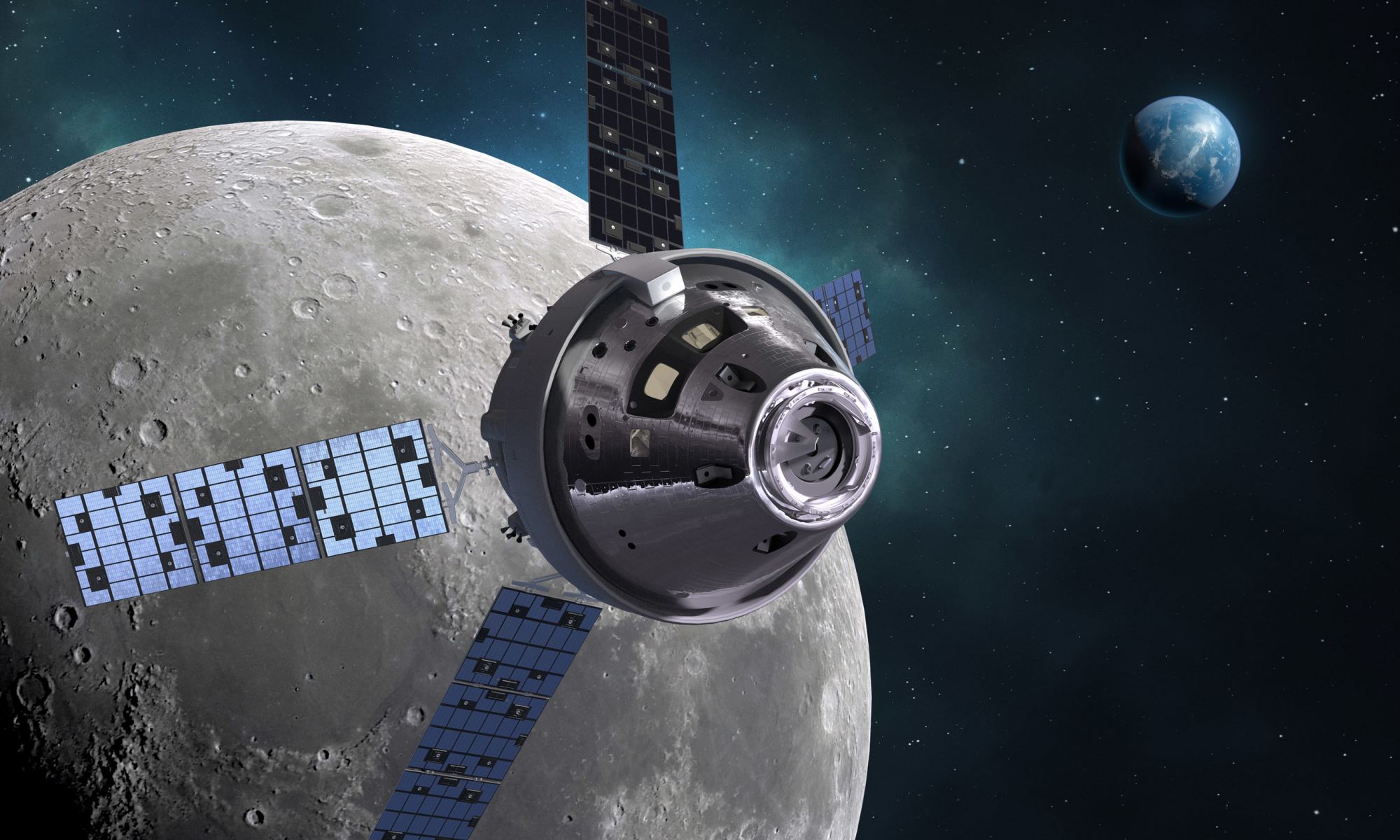
When NASA sends astronauts back to the Moon and to Mars, the Orion Multipurpose Crew Vehicle (MPCV) will be what takes them there. To build these next-generation spacecraft, NASA contracted aerospace manufacturer Lockheed Martin. Combined with the massive Space Launch System (SLS), the Orion spacecraft will allow for long-duration missions beyond Low Earth Orbit (LEO) for the first time in over 50 years.
On Monday, Sept. 23rd, NASA and Lockheed Martin announced that they had finalized a contract for the production and operations of six missions using the Orion spacecraft, with the possibility of up to twelve being manufactured in total. This fulfills the requirements for NASA’s Project Artemis and opens the possibility for further missions to destinations like Mars and other locations in deep-space.
Continue reading “Lockheed Wins the Contract to Build Six More Orion Capsules”Musk Shares the Latest Progress on the Starship Prototypes
SpaceX is getting closer to its making its next big leap with the Starship super-heavy launch system. With hover tests now complete, the public is eagerly awaiting the completion of the full-scale prototypes and for orbital testing to begin. Never one to disappoint, Elon Musk has been posting regular updates on Twitter showcasing the latest progress of the Starship Mk.1 and Mk.2.
Continue reading “Musk Shares the Latest Progress on the Starship Prototypes”India has Located the Vikram Lander, But it’s Still not Communicating With Home
On Sunday (Sept. 8th), the Indian Space Research Organization (ISRO) announced that they had located Vikram, the lander element of their Chandrayaan-2 mission. The search began almost immediately after the space agency lost contact with the robotic spacecraft, which occurred moments before it set down on the lunar surface (on Friday, Sept. 6th).
Continue reading “India has Located the Vikram Lander, But it’s Still not Communicating With Home”The Spaceline: an Elevator From the Earth to the Moon
Humanity’s future may lie in space, but getting out there is a very big challenge. In short, launching payloads into space from the bottom of Earth’s gravity well is quite expensive, regardless of whether or not reusable rockets are involved. And while some have suggested that building a Space Elevator would be a long-term solution to this problem, this concept is also very expensive and presents all kinds of engineering hurdles.
As an alternative, a pair of astronomy gradu
By Continuously Watching the Moon, we Could Detect Interstellar Meteorites
When ‘Oumuamua crossed Earth’s orbit on October 19th, 2017, it became the first interstellar object to ever be observed by humans. These and subsequent observations – rather than dispelling the mystery of ‘Oumuamua’s true nature – only deepened it. While the debate raged about whether it was an asteroid or a comet, with some even suggesting it could be an extra-terrestrial solar sail.
In the end, all that could be said definitively was that ‘Oumuamua was an interstellar object the likes of which astronomers had never before seen. In their most recent study on the subject, Harvard astronomers Amir Siraj and Abraham Loeb argue that such objects may have impacted on the lunar surface over the course of billions of years, which could provide an opportunity to study these objects more closely.
Continue reading “By Continuously Watching the Moon, we Could Detect Interstellar Meteorites”How Do We Settle on the Moon?

Welcome back to our series on Settling the Solar System! Today, we take a look at the closest celestial neighbor to Earth. That’s right, we’re taking a look at the Moon!
Chances are, we’ve all heard about it more than once in our lifetimes and even have some thoughts of our own on the subject. But for space agencies around the world, futurists, and private aerospace companies, the idea of colonizing the Moon is not a question of “if”, but “when” and “how”. For some, establishing a permanent human presence on the Moon is a matter of destiny while for others, it’s a matter of survival.
Not surprisingly, plans for establishing a human settlement predate both the Moon Landing and the Space Race. In the past few decades, many of these plansa have been dusted off and updated thanks to plans for a renewed era of lunar exploration. So what would it take to establish a permanent human presence on the Moon, when could it happen, and are we up to that challenge?
Continue reading “How Do We Settle on the Moon?”There May be Thick Ice Deposits on the Moon and Mercury
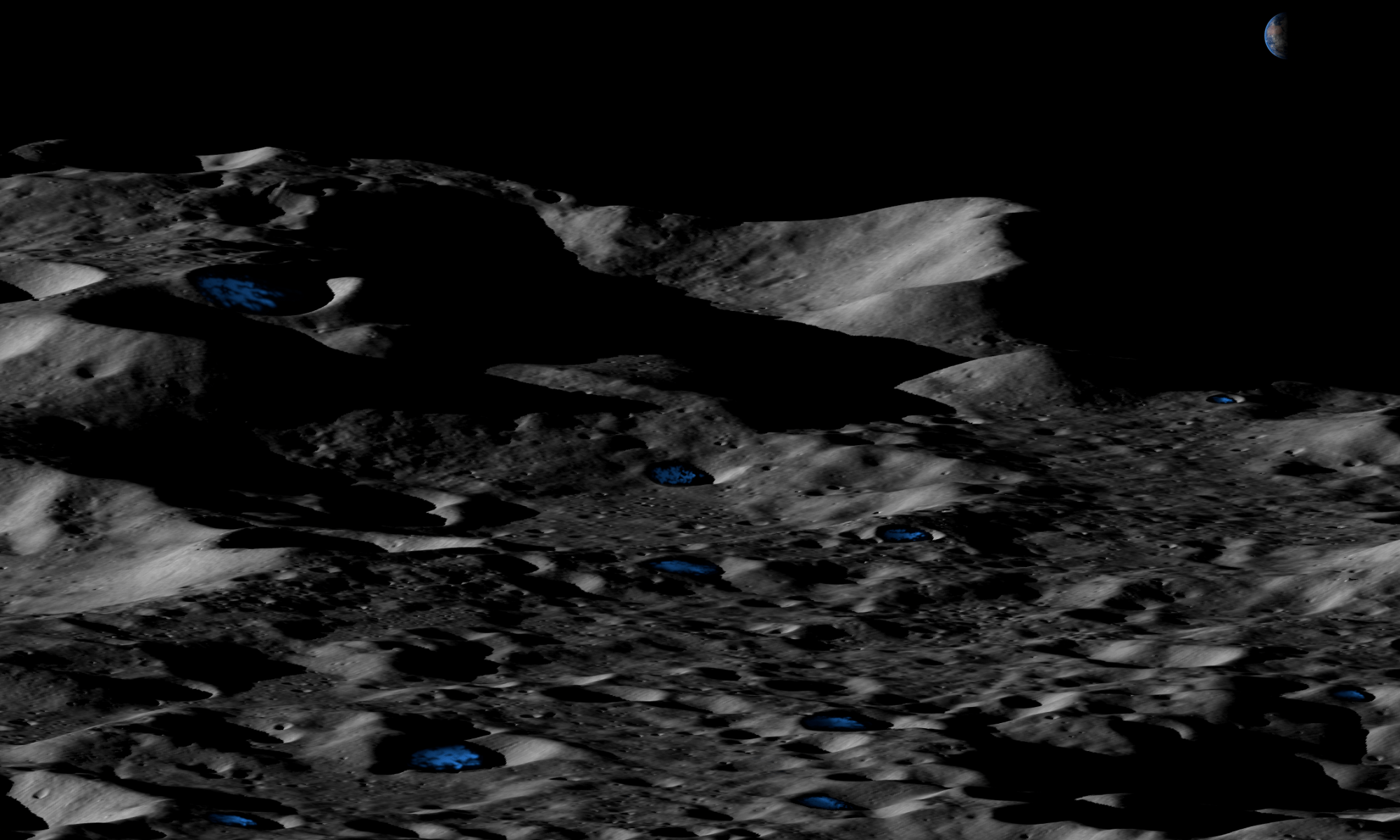
In addition to being the only solvent that is capable of supporting life, water is essential to life as we know it here on Earth. Because of this, finding deposits of water – whether in liquid form or as ice – on other planets is always exciting. Even where is not seen as a potential indication of life, the presence of water offers opportunities for exploration, scientific study, and even the creation of human outposts.
This has certainly been the case as far as the Moon and Mercury are concerned, where water ice was discovered in the permanently-shadowed cratered regions around the poles. But according to a new analysis of the data from the Lunar Reconnaissance Orbiter and the MESSENGER spacecraft, the Moon and Mercury may have significantly more water ice than previously thought.
Continue reading “There May be Thick Ice Deposits on the Moon and Mercury”


